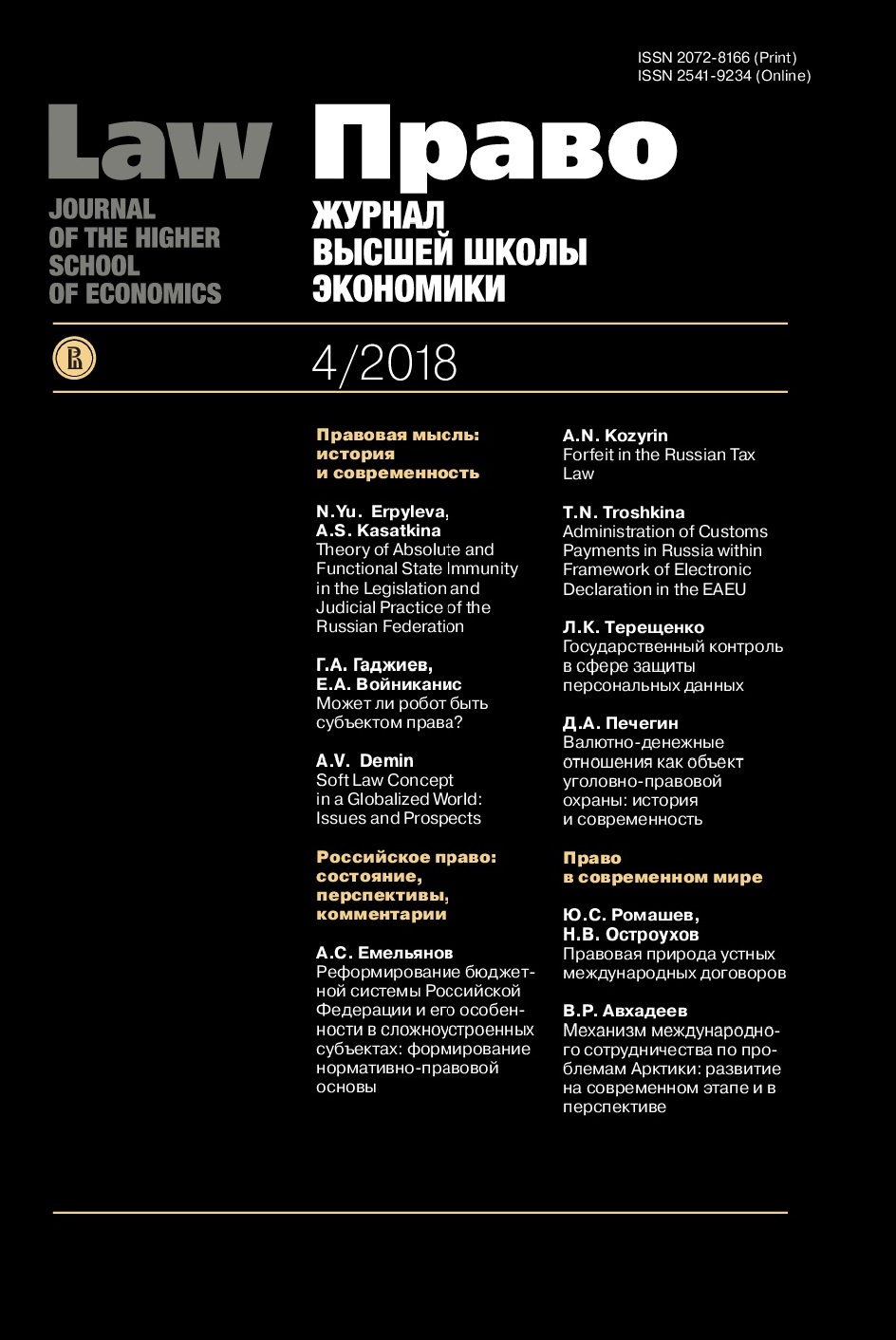Soft Law Concept in a Globalized World: Issues and Prospects
Аннотация
The article is devoted to the soft law concept and its evolution in the modern world. Soft law reduces the degree of uncertainty in the law and at times is the only alternative to abandoning any regulation of people’s interactions. It is pointed out that the norms addressed to particular agents may have different degrees of being mandatory. If we depict the whole system of rules as a continuum and place each rule along it according to how binding it is, then soft law would be placed in the “grey zone” between law and non-law. It is not yet the law, but it is not merely politics, morality, traditions and the like. It is something intermediate between the two. Soft law instruments create uniform “rules of the game” for actors in cross-border relations. The purpose of the soft law concept is to decrease the “zones of uncertainty” in the law. Because of this, soft law, whether it is employed in global law-making systems or not, may be viewed as a source of effective instruments that decrease the level of uncertainty within systems of law. At the same time, the alternative to soft law is not hard law but the absence of any purposeful regulation at all. It is my considered opinion that in the prevailing condition of fragmentation in the official sources of international law, where common approaches are not supported by universal acts and are more typically regulated by bilateral agreements, soft law can offer all interested parties steady, uniform guidelines arrived at through compromise for law-abiding and mutually beneficial behaviour, thus increasing the stability and certainty of cross-border interactions.


















